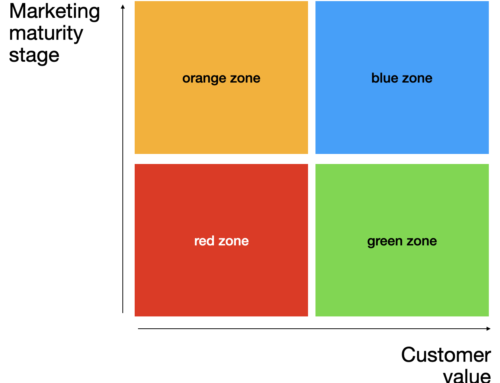I’ve been reading a book by Simon Winchester called, “Exactly. How Precision Engineers Created The Modern World”, and was interested to learn how Henry Ford got the idea for the assembly line.
Apparently, Ford was visiting a Chicago meatpacking plant. Whilst watching the carcasses being hung up and progressing through the plant from workstation to workstation, he observed the cows being ‘processed’ or ‘dis-assembled’ by trained workers doing one specific task at a time.
The light bulb obviously went on for Ford, and he realised that he could put a car together in a similar way – with a moving line and mass of small assemblies.
The innovation meant that he could dramatically slash the time of production – and hence the cost of a car by almost 70%!
Democratizing car ownership and making the quote famous:
“Any customer can have a car painted any colour that he wants so long as it is in black”
Perfection made by perfect craftsmen
I was also intrigued to read in the book about the men behind the names Rolls-Royce. Charles Rolls and Henry Royce.
Royce was the engineer who had learned his trade repairing and maintaining steam locomotives, and then incorporating a company (Royce Ltd) that produced a range of high-quality, large-scale industrial electric cranes.
Apparently, in 1903, after purchasing a second-hand French-made Decauville, Royce started to change his focus to cars.
He thought the Decauville was stylishly built, but the mechanics were found wanting. The ten-horsepower, two-cylinder car was noisy. Its acceleration was poor. It overheated easily. And it wasn’t overly reliable.
So, Royce announced that he would strip the car and redesign it from the wheel treads up. With the desire of making it mechanically perfect and utterly reliable.
He called it the Royce Ten. Slowly refining it, and creating new ones, each better and more finely constructed than its predecessor.
One of the board members, Henry Edmunds, photographed one of the gleaming new cars and sent the photo to a friend of his, Charles Rolls, in London.
Rolls was a salesman and daredevil and was apparently mesmerised by the picture. He invited himself to Royce’s workshop in Manchester and went for a test drive.
The rest, as they say, is history with the men making a business agreement on 23 December 1904.
Then came some real marketing genius
The managing director of the workshop came up with a name for a new Rolls-Royce series, rather than the tedious name of 40/50, that was being discussed based on the car’s taxable and actual horsepower – Claude “CJ” Johnson proposed the name, the Silver Ghost.
The precision and reliability of the car were demonstrated in 1907 to Royal Automobile Club observers by being driven from London to Glasgow and back again. Turning around no less than 27 times.
The marathon endurance test covered 14,371 miles over 40 days of non-stop running. With the sensational stunt making a splash in newspapers and magazines all over the country.
The indestructibly, well-made car was described by Charles Rolls as “perfection made by perfect craftsmen”. And after the test, the car was pulled apart with almost no evidence of wear and tear on its critical working parts.
Rolls-Royce became the gold standard, and as we know, become part of the lexicon.
What did I learn?
I loved reading about these two stories. They made me think about new perspectives from old learnings.
Over the past decade or two, I have seen a mass of advertising and communication that has attempted to make a splash for splash’s sake.
Primarily driven by the rise of social media and short-termism. Rather than focus on real value for everyday life.
As Mark Ritson referred to in a recent WFA speech:
“We started out in advertising with a real practical, proletarian focus on the working men and women and what they wanted to buy, and I think we’re dramatically and ridiculously mutating into a discipline that is overly concerned with things that don’t include the actual the minutiae of everyday life, and the importance of quotidian existence and targeting everyday consumers. How advertising works. What brands do.”
Obviously, the Ford example is a good one for the everyday consumer.
However, it also got me thinking about highly targeted brands, such as Rolls-Royce.
They shouldn’t be any different in the sense that luxury brands offer distinct value to their target audience. And their marketing wouldn’t stand up if it was meaningless and trying to simply make a splash without substance.
I think it’s fair to say that Rolls-Royce’s audience is best described as extremely exclusive or filthy rich.
And any luxury brand marketing, story, prospecting, and/or sales-related communication would need to heavily focus on the authentic functional and emotional benefits.
Therefore, it was pleasing for me to discover that Rolls-Royce’s CEO Torsten Müller-Ötvös recently announced a unique collaboration between RR and Paris fashion house Hermes. To custom build a Phantom for a Japanese billionaire, Yusaku Meazawa.
Meazawa has an estimated net worth of $3.6 billion, according to the Bloomberg Billionaire Index. He is the 45-year-old entrepreneur and founder of online fashion retailer Zozotown, and apparently has a passion for flashy, seven-figure supercars.
Müller-Ötvös’ announced. “It has been an extraordinary privilege to unite on such a creatively challenging, technically demanding commission, and bring our client’s remarkable vision so beautifully to life.”
He is referring to the new Phantom Oribe, inspired by the glazes of ancient Japanese Oribe ceramic, which Maezawa also collects.
Meazawa had initiated the unique collaboration between Rolls-Royce and Hermès to build what has been described as “the most elegant and understated Phantoms ever”. You can read all about it here
Photo by Oli Tennent
Or read about Drake’s new custom-built Rolls-Royce Cullinan, a collaboration with Chrome Hearts – it’s a sight to behold. Take a look here
Whilst I’m not in the market for a Rolls-Royce, these collaborations tell me that Rolls-Royce is singularly focussed on creating value and reinforcing its authentic brand ethos and position around prestige and exclusivity.
It continues to push the boundaries on technical innovation and perfectionism.
I don’t view its brand marketing or communication as meaningless or flashy for social success. But rather, being extremely meaningful to their exclusive target audience.
It may also represent great attraction to potentially new audiences that Rolls-Royce may not have previously appealed to (ie: the wave of up-and-coming tech billionaires).
The bottom line
So, the learning for me with these case studies and stories is for marketing and communications to get back to focus on real value.
I wonder if you look at all the scopes of work that you are working on across your marketing teams, and put a strategic value lens over each activity, then what percentage would stand up as practical and truly effective?
I’ve mapped many customer journeys where critical touchpoints are completely off-brand. Where management had no idea that communication was being sent out that way. And where team members didn’t really see the importance of some of their scope of work.
Putting a customer lens on everything is so obvious, but it really helps guide decision-making.
Simply asking, “how will the customer perceive this in their world?”, is a good place to start. This allows you to think of the ‘value’ of communication to the customer. Not ‘value’ to the organisation. This is the twist that is often missed. Customers don’t want to hear about your back-end or software problems, or your lack of data integrating across databases. And they don’t want to be made to feel like second-rate citizens when interacting or contacting your organisation. They want solutions and a positive experience. Full stop.
Whilst this sounds easy, it’s absolutely amazing how many organisations don’t review all activity at every touchpoint.
And often it’s the small touchpoints where comms can be failing. Which lets the whole customer experience down.
Is it time to change and re-look at your marketing or customer strategy?










Leave A Comment